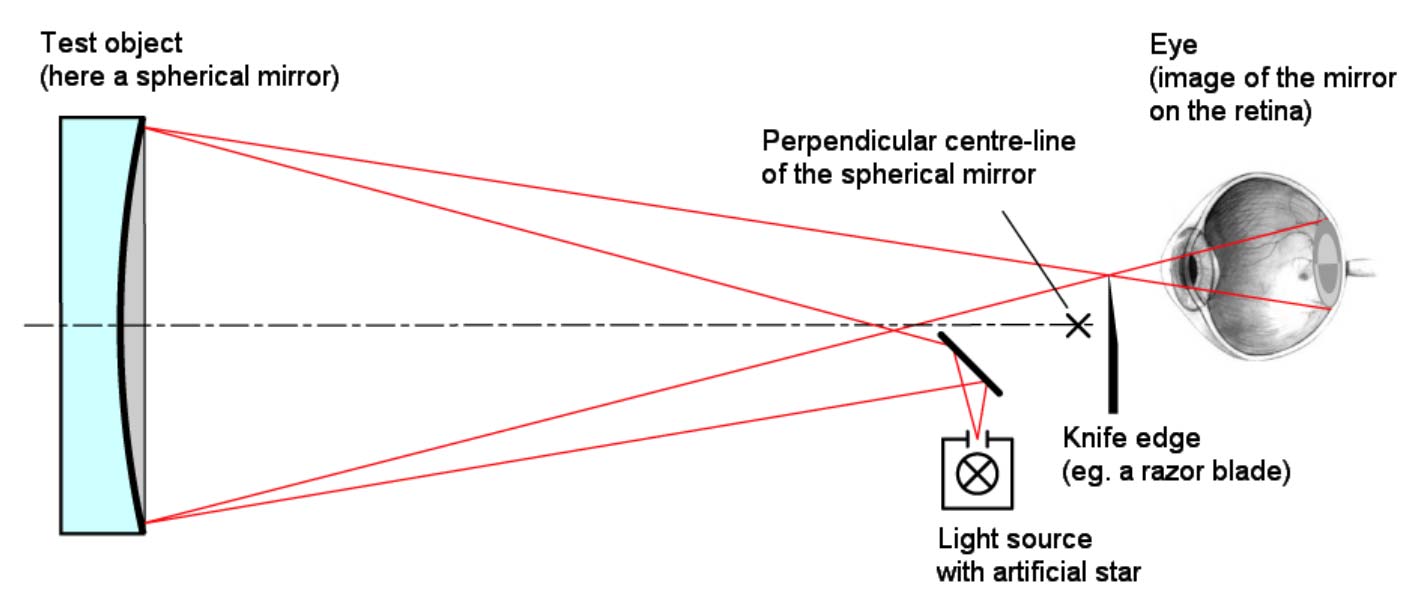Foucault knife-edge test

Foucault test setup to measure a mirror.
The Foucault knife-edge test is a test of optical surfaces, developed by Léon Foucault, that uses reflection and geometrical optical principles to amplify shadows of defects on a telescope mirror so that they are made easily visible.
Like John Hadley some 200 years earlier, Foucault placed a pinhole source at the mirror's center of curvature and arranged the image to be formed alongside the source. However, unlike Hadley, Foucault examined the rays converging to a focus by placing his eye behind a knife-edge, which he then slowly introduced into the image. If the surface of the mirror darkened uniformly, he knew the mirror was spherical; if it didn't, he was able to deduce where and by how much the mirror surface deviated from sphericity.
This technique, now known as the Foucault knife-test, is incredibly sensitive: bulges or hollows in a mirror surface with a relief as little as one millionth of an inch are easily detectable. Armed with his knife-edge, Foucault was able to produce mirrors with an accuracy of figure never before achieved. His technique is still much used today.


